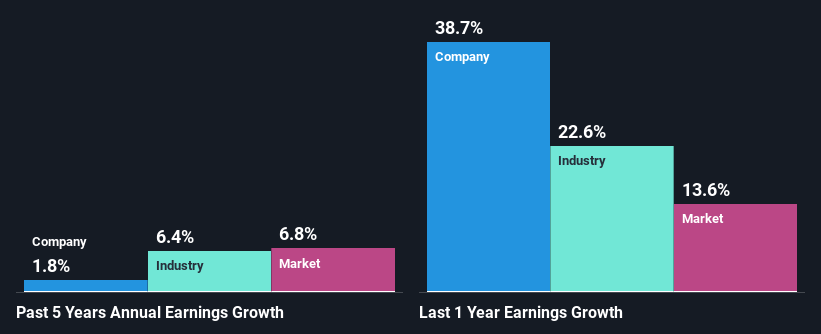Do Fundamentals Have Any Role To Play In Driving The Colonial Motor Company Limited's (NZSE:CMO) Stock Up Recently?
Colonial Motor's (NZSE:CMO) stock up by 1.7% over the past three months. We wonder if and what role the company's financials play in that price change as a company's long-term fundamentals usually dictate market outcomes. In this article, we decided to focus on Colonial Motor's ROE.
Return on Equity or ROE is a test of how effectively a company is growing its value and managing investors’ money. In short, ROE shows the profit each dollar generates with respect to its shareholder investments.
See our latest analysis for Colonial Motor
How Do You Calculate Return On Equity?
The formula for ROE is:
Return on Equity = Net Profit (from continuing operations) ÷ Shareholders' Equity
So, based on the above formula, the ROE for Colonial Motor is:
12% = NZ$28m ÷ NZ$232m (Based on the trailing twelve months to December 2020).
The 'return' is the amount earned after tax over the last twelve months. One way to conceptualize this is that for each NZ$1 of shareholders' capital it has, the company made NZ$0.12 in profit.
What Has ROE Got To Do With Earnings Growth?
We have already established that ROE serves as an efficient profit-generating gauge for a company's future earnings. We now need to evaluate how much profit the company reinvests or "retains" for future growth which then gives us an idea about the growth potential of the company. Assuming all else is equal, companies that have both a higher return on equity and higher profit retention are usually the ones that have a higher growth rate when compared to companies that don't have the same features.
A Side By Side comparison of Colonial Motor's Earnings Growth And 12% ROE
At first glance, Colonial Motor seems to have a decent ROE. Further, the company's ROE is similar to the industry average of 14%. However, we are curious as to how Colonial Motor's decent returns still resulted in flat growth for Colonial Motor in the past five years. Based on this, we feel that there might be other reasons which haven't been discussed so far in this article that could be hampering the company's growth. Such as, the company pays out a huge portion of its earnings as dividends, or is faced with competitive pressures.
Next, on comparing with the industry net income growth, we found that Colonial Motor's reported growth was lower than the industry growth of 6.4% in the same period, which is not something we like to see.
Earnings growth is an important metric to consider when valuing a stock. The investor should try to establish if the expected growth or decline in earnings, whichever the case may be, is priced in. Doing so will help them establish if the stock's future looks promising or ominous. Is Colonial Motor fairly valued compared to other companies? These 3 valuation measures might help you decide.
Is Colonial Motor Using Its Retained Earnings Effectively?
The high three-year median payout ratio of 62% (meaning, the company retains only 38% of profits) for Colonial Motor suggests that the company's earnings growth was miniscule as a result of paying out a majority of its earnings.
Additionally, Colonial Motor has paid dividends over a period of at least ten years, which means that the company's management is determined to pay dividends even if it means little to no earnings growth.
Conclusion
On the whole, we do feel that Colonial Motor has some positive attributes. Although, we are disappointed to see a lack of growth in earnings even in spite of a high ROE. Bear in mind, the company reinvests a small portion of its profits, which means that investors aren't reaping the benefits of the high rate of return. Up till now, we've only made a short study of the company's growth data. So it may be worth checking this free detailed graph of Colonial Motor's past earnings, as well as revenue and cash flows to get a deeper insight into the company's performance.
This article by Simply Wall St is general in nature. It does not constitute a recommendation to buy or sell any stock, and does not take account of your objectives, or your financial situation. We aim to bring you long-term focused analysis driven by fundamental data. Note that our analysis may not factor in the latest price-sensitive company announcements or qualitative material. Simply Wall St has no position in any stocks mentioned.
Have feedback on this article? Concerned about the content? Get in touch with us directly. Alternatively, email editorial-team (at) simplywallst.com.

 Yahoo Finance
Yahoo Finance 
